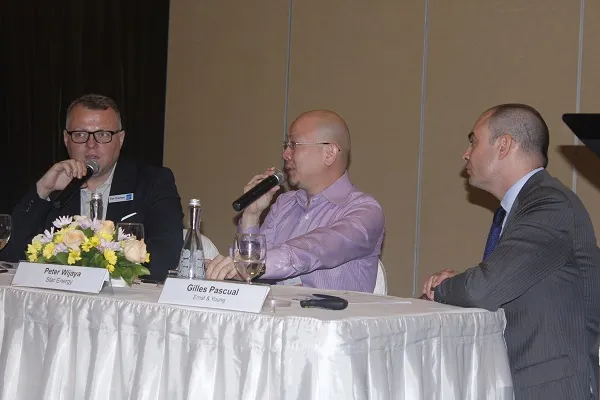
Indonesia’s red-hot geothermal energy goals under threat as sky-high costs bite
The country’s ambitions might be too lofty, experts say.
Indonesia is planning to produce 6023 MW of geothermal power by 2020, but experts warn that the country may fail to meet its ambitious targets due to regulatory challenges coupled with extremely high exploration costs.
“Cost rises steeply the moment drilling and construction begins. Prior to that, costs are so low it can be funded almost entirely by equity. A single field can cost up to USD 50 million, excluding other costs. Someone has to catch the risk, whether it is the project owner or the government,” said Sugeng Triyono, President Director of PT Tangkuban Parahu Geothermal Power, speaking at the Asian Power Utility Forum in Jakarta.
Triyono also argued that Indonesia’s targets may simply be too steep. He pointed out that as of 2016 geothermal energy makes up just 1.1% out the entire renewable energy share; by 2025, Indonesia aims to raise it to 5.8%.
In order to reach these targets, Indonesia will need to add roughly 300 Mw of geothermal energy per year, which translates to drilling around 60 wells per annum.
“Manufacturers cannot support Indonesia’s geothermal development,” Triyono said.
“Indonesian geothermal assets are extremely attractive to the private sector. There are financing solutions for this on a pure non-reocurse basis. For instance ADB can provide funding for exploration, Even IFCs have solutions for these geothermal projects. Soon financing will be available to geothermal players in Indonesia,” said Gilles Pascual, Partner, Ernst & Young, Infrastructure Advisory.
“Clearly what’s missing is the renewable framework. We still don’t have solid regulatory framework for geothermal, for instance,” Pascual added.
Peter Wijaya, Vice President Commercial and Business Development at Star Energy, added that risk-sharing for capital-intensive geothermal projects is a key concern for developers and investors.
“Funding for exploration is tough—investors have to take on the full risk,” he noted. As a result, independent power producers like Star Energy have to keep a tight rein on exploration costs, with more budget spared for low-risk, established fields rather than exploring untapped “greenfield” projects.
“First of all, the exploration risk is very similar—though not as high—as oil and gas. However the returns of geothermal is not as high as oil and gas. Geothermal reservoirs are much more complex than O&G. We simply budget the exploration,” he said, adding that exploring a well could cost as much as US$7 million to US$10 million per well.”
“The energy roadmap initially didn’t even include geothermal. Renewable energy is low on the government agenda. If I were the government, I would say the traffic is attractive. If I were a developer, I would also say so. But the problem is implementation. In order to qualify for the tariff, you first need to prove that you have started exploration. That’s the law. The risk is entirely on the developer,” Wijaya noted.
Apart from Indonesia’s geothermal energy prospects, experts at the forum also discussed the best practices to implement efficient maintenance strategies on Indonesian plants.
“Operations should be taken into consideration even during a power plant’s development phase. Thinking about long-term optimization typically means that capex is 3-5% more, because you need to put long-term equipment in capex,” said Harry Salzwedel, Project Advisor, PT Central Java Power. “Maintenance is not maintenance: it’s asset performance enhancement. We don’t just fix it, we improve it,” he added.
Ari Frantsi, Vice President at Bekasi Power, stressed that proper plant maintenance begins with a work culture in which people support disciplined structured processes.
“Operators need uniform key performance indicators (KPIs), and establish a standardized reward system based on these indicators,” he said.













 Advertise
Advertise











